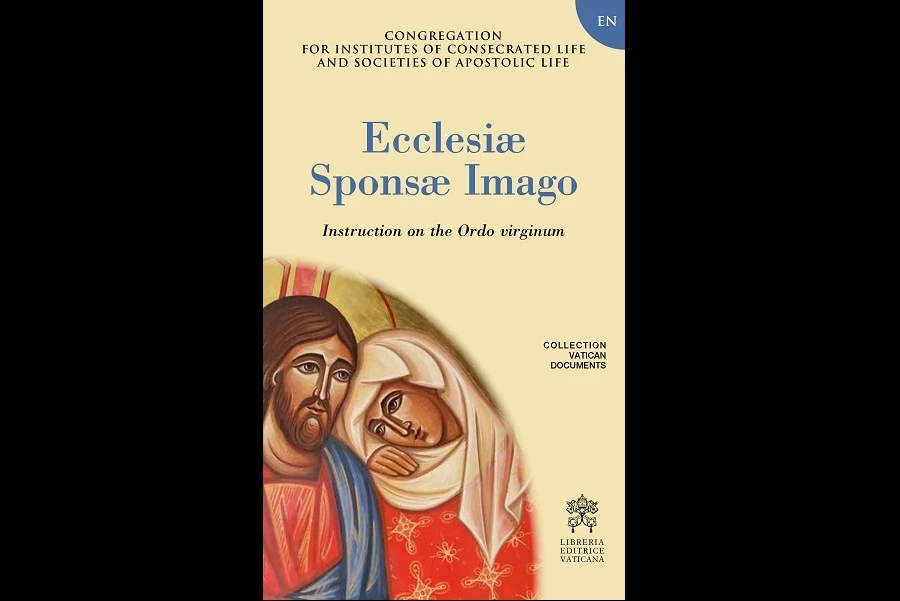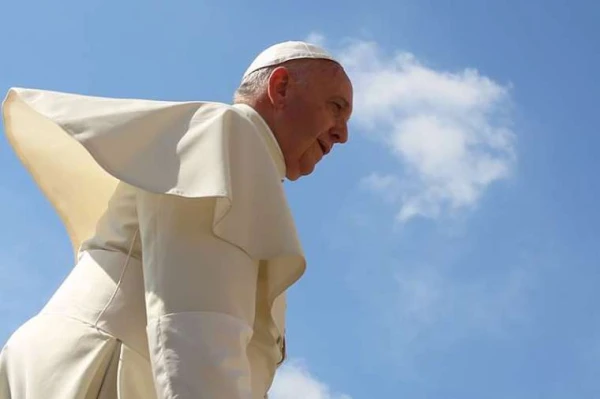
Washington D.C., Jul 16, 2018 / 01:56 pm (CNA).- A new Vatican instruction on the role of consecrated virginity has drawn criticism from an American group, which says that a key paragraph of the document could lead to confusion. At issue is whether entering the Church’s “order of virgins” requires that women actually be virgins.
On July 4, the Vatican’s Congregation for Institutes of Consecrated Life and Societies of Apostolic Life made public Ecclesiae Sponsae Imago, an instruction about consecrated virginity in the Church.
The instruction drew criticism from the Lansing, Mich.-based U.S. Association of Consecrated Virgins, which put out a statement that criticized the document, calling it “intentionally convoluted and confusing.”
The group said the document seems to say that “physical virginity may no longer be considered an essential prerequisite for consecration to a life of virginity,” and called this implication “shocking.”
The association is a voluntary organization of consecrated virgins in the U.S. According to its 2015 statistics, it has 97 voting members and another 34 associate members.
“There are some egregious violations of chastity that, even if not strictly violating virginity, would disqualify a woman from receiving the consecration of virgins,” the association said.
“The entire tradition of the Church has firmly upheld that a woman must have received the gift of virginity – that is, both material and formal (physical and spiritual) – in order to receive the consecration of virgins,” the statement added.
The controversial paragraph of the document, #88, instructs that: “it should be kept in mind that the call to give witness to the Church’s virginal, spousal and fruitful love for Christ is not reducible to the symbol of physical integrity. Thus to have kept her body in perfect continence or to have practiced the virtue of chastity in an exemplary way, while of great importance with regard to the discernment, are not essential prerequisites in the absence of which admittance to consecration is not possible.”
It continues: “The discernment therefore requires good judgement and insight, and it must be carried out individually. Each aspirant and candidate is called to examine her own vocation with regard to her own personal history, in honesty and authenticity before God, and with the help of spiritual accompaniment.”
Jenna Cooper, a Minnesota-based canon lawyer who has been a consecrated virgin of the Archdiocese of New York since 2009, told CNA that the Vatican’s instruction must be read carefully to be understood.
“I don’t see this as saying non-virgins can be virgins. I see this as saying in cases where there is a real question, it errs on the side of walking with women in individual cases for further discernment, as opposed to having a hard-dividing line to exclude women from this vocation,” Cooper told CNA.
“The presumption of the document is that these are virgins who are doing this (consecration),” she said.
“An important thing to do though is to read the questionable paragraph in context with the rest of the document,” she continued. “The instruction talks a lot about the value of virginity, Christian virginity, the spirituality of virginity.”
Cooper also said that the document can’t be understood as a change in Vatican policy. “The nature of this kind of document as an instruction doesn’t change the law that it’s intended to explain,” she said.
The rite of consecration itself is the law, while the instruction is meant as “an elaboration for certain disputed points,” Cooper said, adding “It’s just giving you further guidance in places where existing law is vague.”
In Cooper’s view, the document’s “more generous description” of the prerequisite of virginity is “allowing for people in difficult situations to continue some serious discernment.” One disputed paragraph, she thinks, was meant to apply to “difficult cases” where a woman cannot answer whether she is a virgin according to a strict standard. She cited cases where women might have lost their virginity without willing it or against their will, or out of ignorance. Women might have “committed grave sins against chastity but not actually lost their virginity in their minds”
Judith Stegman, president of the U.S. Association of Consecrated Virgins, praised the document, saying it “responds well to many questions” about consecrated virginity in the Church. She lauded its emphasis on the consecrated virgin’s “mystical espousal to Christ as key to this bridal vocation of love that images the relationship between Christ and the Church.”
However, she reiterated that paragraph 88 was a “confusing statement.” Immediately after the document was published, she said, “we began to receive comments from readers stating, ‘Whoa! Physical virginity is no longer required for the consecration of virgins!’”
As for difficult cases, Stegman said, “If a woman has been violated against her will and has not knowingly and willingly given up her virginity, most would hold that she would remain eligible for consecration as a virgin. Such a case would require depth of good judgment and insight carried out in individual discernment with the bishop, as is discussed in paragraph 88.”
“It is not such cases, however, that are most common, and if the intention of paragraph 88 was to address situations such as rape, it could have done so directly, without compromising the essential and natural requirement of physical virginity for the consecration of a virgin.”
“In our society, questions of eligibility for the consecration of virgins are raised by those who have given up their virginity, perhaps only one time, and who have later begun again to live an exemplary chaste life.” she said, saying the document “should have indicated that these women do not have the gift of virginity to offer to Christ.”
“They may make a private vow of chastity, or enter another form of consecrated life, but the consecration of virgins is not open to them.”
The association cited the introduction to the Rite of Consecration to a Life of Virginity, which consecrates a virgin as “bride of Christ” so that she might be “an eschatological image of the world to come and the heavenly Bride of Christ.”
The association’s statement also acknowledged that the prerequisites for consecration are not changed by the instruction.
Cooper also praised the instruction as “a very positive development for this vocation.”
“One thing I’m particularly happy about is I think it does an excellent job articulating the values of this vocation for the wider Church,” she said.
The Vatican estimates there are now more than 5,000 consecrated virgins worldwide.
If you value the news and views Catholic World Report provides, please consider donating to support our efforts. Your contribution will help us continue to make CWR available to all readers worldwide for free, without a subscription. Thank you for your generosity!
Click here for more information on donating to CWR. Click here to sign up for our newsletter.






There’s definately a lot to know about this issue. I
really like all the points you have made.
Thank you for sharing this good article, Virginity with discernment